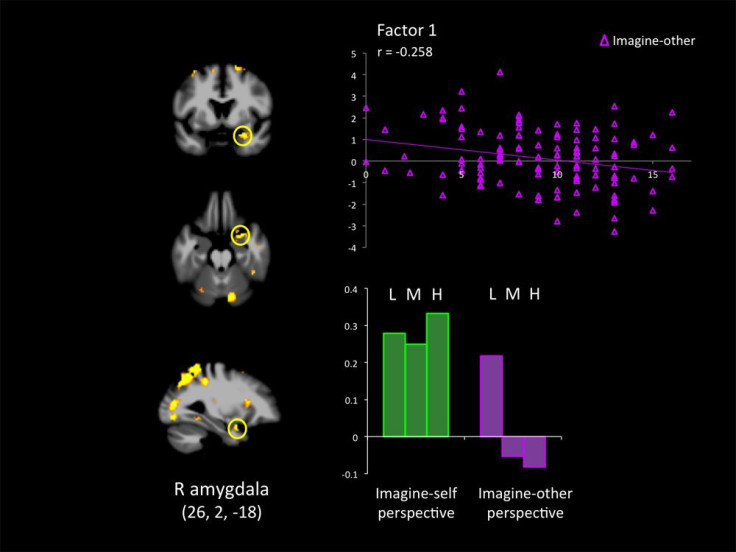Psychopaths Feel No Empathy For Others; How Do Their Brains Differ?

In nature, the psychopath feels no pain beyond his own, an island unto himself in an emotional wasteland.
As many as one percent of people — and nearly one in every four inmates in American prisons — may exhibit traits consistent with the personality disorder of psychopathy: a lack of empathy and remorse, shallow affect, glibness, manipulation, and callousness. Under the lens of modern brain scanning technology in a study of U.S. prisoners, people with psychopathy to varying degrees not only fail to experience empathy for another’s pain, but also derive pleasure from the thought.
In a way, such people may be thought of as emotionally retarded, lacking a mental capacity inherent in others and integral to the networking of the social species, homo sapiens. When asked by researchers to imagine another’s pain, study subjects demonstrated no activation in brain areas associated with empathy but instead experienced some activity in areas representing pleasure. In a neural-typical person, brain areas associated with empathy would activate and connect with other areas underlying affective processing and decision-making.
Although science has established the marked deficit in affective arousal and emotional empathy within people with the personality disorder, researchers at the University of Chicago hope the neurological study may help develop applications for rehabilitation. Whereas healthy people may develop greater empathy for others from an innate capacity for affective arousal, psychopaths — sometimes referred to as “sociopaths” — tend to respond poorly to any rehabilitation efforts.
In the study, researchers used a standard diagnostic tool to separate 121 incarcerated men into three groups, including highly, moderately, or weakly psychopathic. Subsequently, they found that “participants with high psychopathy showed a typical response within the network involved in empathy for pain, including the anterior insula, anterior midcingulate cortex, supplementary motor area, inferior frontal gyrus, somatosensory cortex, and right amygdala.”
Conversely, the study subjects “exhibited an atypical pattern of brain activation and effective connectivity seeded in the anterior insula and amygdala with the orbitofrontal cortex and ventromedial prefrontal cortex" when asked to imagine another’s pain.
“Taken together, this atypical pattern of activation and effective connectivity associated with ‘perspective taking’ manipulations may inform intervention programs in a domain where therapeutic pessimism is ore the rule than the exception,” lead investigator Jean Decety and his colleagues wrote. “Altered connectivity may constitute novel targets for intervention.”
In essence, researchers believe the psychopath’s ability to conceptualize his own pain might provide a target for “kick-starting” a latent capacity for empathy via cognitive behavioral therapy.
Source: Decety J, Chen C, Harenski C, Kiehl KA. An fMRI Study Of Affective Perspective Taking In Individuals With Psychopathy: Imagining Another In Pain Does Not Evoke Empathy. Frontiers In Human Neuroscience. 2013.
Published by Medicaldaily.com



























